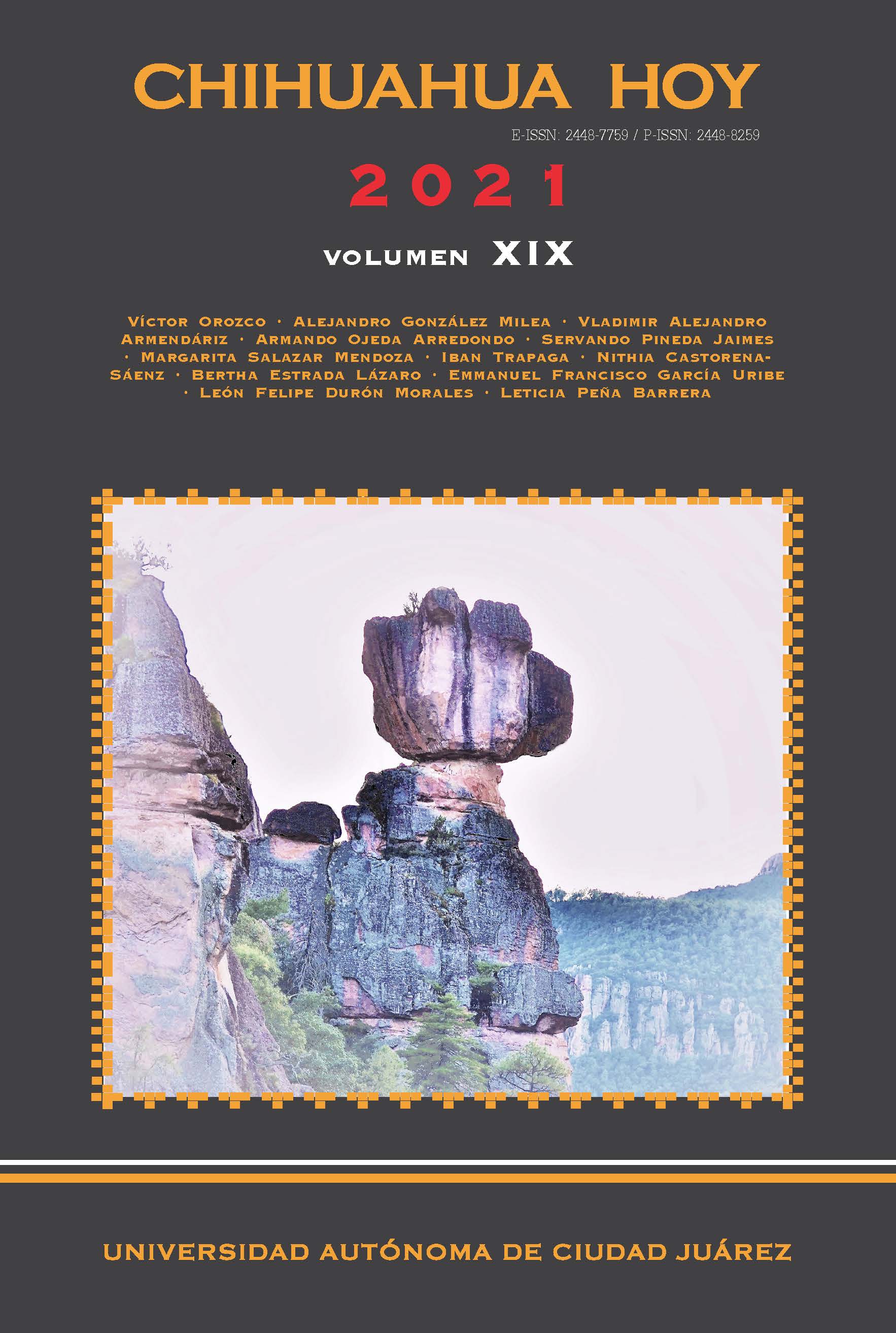The Emerging Paradigms in Post Covid-19 Architectural Design in Ciudad Juarez:
Synchronous and Asynchronous Spaces
DOI:
https://doi.org/10.20983/chihuahuahoy.2021.19.11Keywords:
synchronous, asynchronous, domestic space, transformationAbstract
The confinement that originated in order to mitigate the COVID-19 pandemic has repercussive effects on different activities of daily life. This research seeks to identify transformations generated in the households of Ciudad Juarez, Chihuahua, through modifications in the use and order of essential areas. The methodology used is that of a mixed type, applying qualitative and quantitative tools, which account for the use of spaces and their transformations during the confinement by COVID-19. The results observed are identified changes that generate asynchronous spaces in the family’s daily environment, modifying the previous organization and structure of the use of the dwelling.References
De Certeau, M., Giard, L., & Mayol, P. (1994). La invención de lo cotidiano 2: inventar, cocinar (1.a ed.). Universidad Iberoamericana/ITESO.
Durón Morales, L. F., & Peña Barrera, L. (2021). La formación del arquitecto en el debate de la sustentabilidad en la enseñanza de tres universidades. En: Investigación en arquitectura. Ciudades accesibles, sustentables y habitables (pp. 159-180).
Forqués Puigcerver, N. (2016). La flexibilidad en la arquitectura. Mito, Rev. Cult., 30.
Frías, L. G. (2013). Lugar y arquitectura. Reflexión de la esencia de la arquitectura a través de la noción de lugar. Arquitectura revista, 9(2), 161–169. https://doi.org/10.4013/arq.2013.92.09.
González, C. (2021). El espacio doméstico: el otro gran escenario del COVID-19, Entrevistado por Carrasco Salas, Pamela. Universidad de la Frontera.
Gómez-Calles, T. J. (2020). Intersección de pobreza y desigualdad frente al distanciamiento social durante la pandemia covid-19. Rev. Cub. Enf., 36, 1-15.
Grafova, I. (2008). Overweight Children: Assessing The Contribution Of The Built Environment. Prev Med., 47, 304.
Hábitat México (2020). Vivienda y covid-19. Hábitat para la humanidad. https://www.habitatmexico.org/article/vivienda-ycovid#:~:text=La vivienda es ahora, una cuestión de vida o muerte
Herrera Sosa, L. C. (2017). Evaluación térmica del material isoblock en el clima cálido seco de Ciudad Juárez, México. Rev. Háb. Sust., 7(2), 18-27.
Holahan, C. (2012). Psicología ambiental: un enfoque general. Grupo Noriega Editores/Limusa.
Hurtado, M., & Sánchez, A. (2015). Arquitecura dúctil. International Conference Arquitectonics Network: Architecture, Education and Society, 3-5.
Illich, I. (1978). La convivencialidad. Prefacio. Introducción. Instituto Nacional de Estadística y Geografía (Inegi) (2020). Scince 2020.
Maiztegui, B. (2019). Ejemplos de espacios flexibles por medio de divisiones móviles en Argentina. Archdaily.mx https://www.archdaily.mx/mx/924843/ejemplos-de-espacios-flexibles-pormedio-de-divisiones-moviles-en-argentina
Monteys, X., & Fuertes, P. (2001). La casa collage: un ensayo sobre la arquitectura de la casa. En: G. Gili (Ed.), Persepsi Masyarakat Terhadap Perawatan Ortodontik Yang Dilakukan Oleh Pihak Non Profesional (1.a ed., Vol. 53, Art. 9).
Overstreet, K. (2021). ¿Qué es realmente un hogar y cómo planificamos su futuro? Archdaily.mx https://www.archdaily.mx/mx/954510/que-es-realmente-un-hogar-y-como-planificamossu-futuro
Peña, L., & Herrera, L. (2020). La vivienda construida en serie y la influencia de la normatividad para las condiciones de habitabilidad en Ciudad Juárez, Chihuahua, México. Edähi, Bol. Cient. Cienc. Soc. Hum. Icshu, 9(17), 26-34.
Perucho Lizcano, J. (2004). La estructura inflexible de la obra arquitectónica (como reflejo del sentido del espacio en el mundo de las ideas y en paralelo con la estructura formal de la obra literaria).
Terry, L., & Linden, S. (2020). How Do I Decide if my Course or Program Should Be Blended Online or Hybrid sp. Digital Teaching & Learning–Laureate International Universities.
Tingley, K. (2020, 28 de junio). La arquitectura podría ayudar a adaptarnos a la pandemia. La propagación del virus no es solo una crisis de salud; también es un problema de diseño. The New York Times. https://www.nytimes.com/es/2020/06/28/magazine/arquitectura-pandemia.htmlfbclid=IwAR37U4uGRI55b9CRBZPBd-5Lz-AYFEXhpknszX2tv3EKKIn-FeoKDPI2Io
Zukin, S. (1989). Loft Living: Culture and Capital in Urban Change. Rutgers University Press. https://scholar.google.es/scholar?hl=es&as_sdt=0%2C5&q=loft+mexico&btnG=#d=gs_cit&u=%2Fscholar%3Fq%3Dinfo%3AxNZdIXjmpGAJ%3Ascholar.google.com%2F%26output%3Dcite%26scirp%3D1%26hl%3Des
Downloads
Published
How to Cite
Issue
Section
License
Copyright (c) 2021 Chihuahua Hoy

This work is licensed under a Creative Commons Attribution-NonCommercial-ShareAlike 4.0 International License.
Todos los contenidos de la edición electrónica de la revista se distribuyen bajo una licencia de uso y distribución “Creative Commons Reconocimiento-No Comercial-Compartir Igual 4.0 Internacional” (CC-BY-NC-SA). Puede consultar desde aquí la versión informativa de la licencia.
El o los autores conservan sus derechos de autor y garantizan a la revista el derecho de primera publicación de su obra.







